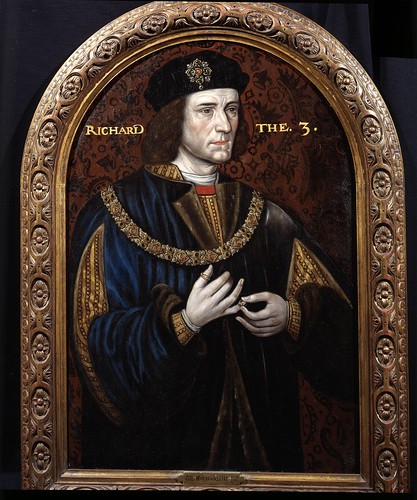<
Henry was the fourth son of William and Conqueror and his wife Matilda. Yet, acceding the throne didn’t come as a surprise to Henry, because the instant his brother, William II, died, he rode to London and was crowned within three days. It has been suggested by historians that William II has been killed on the orders of Henry himself, in a bid to become King of England. No love lost there then it seems.
King Richard I and King John
Two generations later, and Richard Lionheart was King of England. He was the third son of King Henry II and Eleanor of Aquitaine. Though his eldest brother William had died in infancy, his second brother, Prince Henry, survived until adulthood. So great was the expectation that Henry would succeed his father that he was known as “The Young King” and even crowned at Westminster – this was the only time in the history of the British monarchy that a King was crowned while his predecessor was still alive and on the throne. But when the Young King died before he could succeed Henry II fully, Richard, who was set to be the next Duke of Aquitaine, was the heir apparent, and became King following the death of his father in 1189.
Henry II and his Queen had five sons – and Prince John was the last of them. He, least of all, expected to become King, but his older brothers all predeceased him, and of them, only Geoffrey, Duke of Brittany, had a son, twelve-year old Arthur. Arthur would have been King, had it not been for the fact that he was only a child, and later died in what many have believed to be suspicious circumstances. Richard I bequeathed the throne to his youngest sibling, John, who ruled for 17 years, before passing the throne onto his own son, who became Henry III.
John, Duke of Lancaster and Edmund, Duke of York
For over a hundred years after his death, claimants to the English throne would base their claim upon the fact that they were descended from King Edward III. However, their ancestry can be traced back, not to King Edward’s first child, but to his middle sons, John of Gaunt and Edmund of Langley, the Dukes of Lancaster and York respectively.
The King’s oldest son, Edward of Woodstock, died in 1376, a year before his father. As a result, the Crown passed to Prince Edward’s only son, Richard II. But Richard turned tyrant in 1397, and he exiled his cousin, and John’s oldest son, Henry of Bolingbroke. Two years later, Henry returned to England and, after forcing Richard to abdicate, had himself crowned King Henry IV, the first Plantagenet ruler of the House of Lancaster.
However, the dynasty wasn’t to last, and in 1461 his grandson, Henry VI, was deposed by Edward, Duke of York, the great-grandson of Edmund of Langley. This was only the beginning of the Cousins’ War – a disastrous series of battles between the descendants of John, Duke of Lancaster and Edmund, Duke of York, and the new Edward IV, who was the first King of the House of York.
More short-lived than their cousin Lancasters, the York dynasty ended when Richard III was defeated in the Battle of Bosworth in 1485. Henry Tudor, the victor, derived his claim to the throne from the fact that his mother was a descendant of John of Gaunt’s son from his third wife, Katherine Swynford. Even though John never became King himself, all future monarchs were descended from him – including the present Queen.
King Richard III
 England. He was the youngest child of Richard Plantagenet, a nobleman in the court of King Henry VI. But when his older brother Edmund was killed in battle alongside his father, and his eldest brother established himself as King Edward IV, Richard suddenly found himself third in line to the throne, after his brothers, the King and George, Duke of Clarence.
England. He was the youngest child of Richard Plantagenet, a nobleman in the court of King Henry VI. But when his older brother Edmund was killed in battle alongside his father, and his eldest brother established himself as King Edward IV, Richard suddenly found himself third in line to the throne, after his brothers, the King and George, Duke of Clarence.King Henry VIII
Queen Elizabeth I
 ind, as a woman, Elizabeth believed that she would never be Queen in her own right. And yet, history tells us differently. Not only did Elizabeth outlive both of her siblings, but her reign lasted four times longer than both Mary and Edward’s reigns combined.
ind, as a woman, Elizabeth believed that she would never be Queen in her own right. And yet, history tells us differently. Not only did Elizabeth outlive both of her siblings, but her reign lasted four times longer than both Mary and Edward’s reigns combined.
Photo credit: lisby1 via photopin cc (Richard III, Elizabeth I) and CircaSassy via photopin cc (Henry I)
]]>

